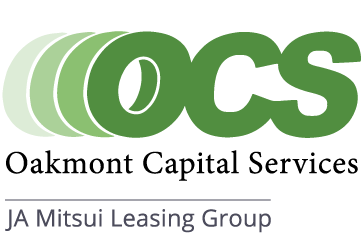Rising Costs & Equipment Shortages: What Business Owners Need to Know
We’re not even halfway through 2022, and it’s already been a challenging year when it comes to procuring equipment. A recent poll by Goldman Sachs supports this reality, finding that 7 in 10 small business owners say supply chain issues negatively impact their businesses. Only 13 percent believe these issues will be fixed by the latter half of 2022. What’s causing these shortages? The COVID-19 pandemic and rising inflation rates are projected to continually impact several industries typically requiring equipment to operate, such as trucking and construction.
The trucking industry is experiencing challenges, including trouble moving goods and driver shortages. According to an Omaha, Nebraska-based trucking carrier quoted in The Wall Street Journal, “as long as we have underlying inflation across the economy, you’re going to see that inflation reflected in the cost of goods and services to include trucking.” In construction, raw material costs are the concern, like lumber, where demand increased while access decreased.
With the spring in full swing, COVID-19 restrictions are easing up. However, in tandem with inflation, the impact of the last two years of the pandemic means that costs will keep rising, and equipment will remain difficult to acquire. Unfortunately, industries besides trucking and construction are not immune to the impacts of marketplace shortages. Across the manufacturing industry, for example, equipment providers have had a tough April, with production continuing to slow. This slowdown was again due to supply chain issues like the transportation of goods from foreign countries.
According to SME, a nonprofit supporting the manufacturing industry, this sector remains in a demand-driven, supply chain-constrained environment. As a result, business owners cannot acquire equipment immediately and find themselves on waiting lists, which may mean they are unable to grow their businesses in the current climate.
Another factor impacting U.S-based businesses is rising rates. The Guardian reported that inflation rates rose to 6.8 percent at the end of 2021 – reaching the highest point in 39 years. And it has continued to increase. As of March 2022, inflation hit 8.5 percent, and gasoline and raw materials prices continue to creep up. According to the Consumer Price Index, the cost for used vehicles and equipment is also on the rise, up over 24.4 percent.
Oakmont Capital Services believes it’s essential for small business owners to stay hopeful during these uncertain times. Although current economic conditions may impact business, there are some steps owners can take to lighten the blow, including:
- Building Up Cash Reserves
- Having a Business Contingency Plan
- Strategizing with Partners
- Communicating Daily with Customers
Building Up Cash Reserves
Having an emergency cash fund, also known as a cash reserve, is crucial for a small business owner. If something unforeseen happens, you can access this emergency backup fund. Building up one or multiple cash reserves enables you to move quickly to address unprecedented circumstances and challenges in your industry. Another perk? It lets you take advantage of opportunities created by competitors who are not prepared for a downturn.
Having a Business Contingency Plan
Building up cash reserves is a significant first step when prepping for economic uncertainty – but what good is a cash reserve without the proper plan behind it? A business contingency plan ensures that your savings are used effectively and adequately to mitigate a pandemic, natural disaster, hacking attack, or other unfortunate or unforeseen business circumstances.
To learn more about Business Contingency Plans, check out this resource and start creating yours today.
Strategizing with Partners
Even if you have cash reserves and an excellent business contingency plan, you can’t predict or control what your manufacturing/supply chain partners might face during unpredictable market conditions or how those conditions may impact their businesses (and, in turn, yours). It’s crucial to align with your partners, opening dialog and communication channels in best and worst-case scenarios.
Communicating Daily with Customers
Communication with your customers is the key to managing their expectations. Transparency is critical to retaining customers and being upfront with prospects. Good communication equals informing customers if costs will rise, or your products/services will be delayed. Also, explain the reasons behind these setbacks, especially if delays are out of your control (e.g., supply chain issues). Be concise, considerate, and clear when being the “bearer of bad news” and its impact on your customer.
• Your company website
• Social Media platforms like Facebook and LinkedIn
• Email marketing campaigns
• Snail mail (yes, it’s still a viable option!)
Despite pandemic restrictions easing up, businesses across the USA can still feel the ripple effect of rising costs and equipment deficits. Supply chain issues like raw material shortages and inflation aren’t helping, and it’s too soon to say when pre-pandemic market conditions will return. As a result of the current economic climate, Oakmont Capital Services strongly urges our customers to prepare for the worst and hope for the best. Proper planning and strategizing can help you overcome these current obstacles and reduce their impact on your business.
At Oakmont Capital Services, our finance professionals are poised and ready to offer our customers assistance beyond the loan transaction. Reach out to us for information, market conditions, or advice on equipment loans. We’re here to make it possible for small businesses!
WHY CHOOSE US?
Better Rates and Flexible Terms
Oakmont Capital shatters the big bank rates, making us the go-to funding source for a wide range of customers.
Over 20 Years of Experience
Work with our team of experts and grow your business. Speak with our Certified Lease & Finance Professionals today to learn more.
24 Hour Turnaround
Our streamlined application process delivers credit decisions within hours, not days, maximizing your time and experience.

